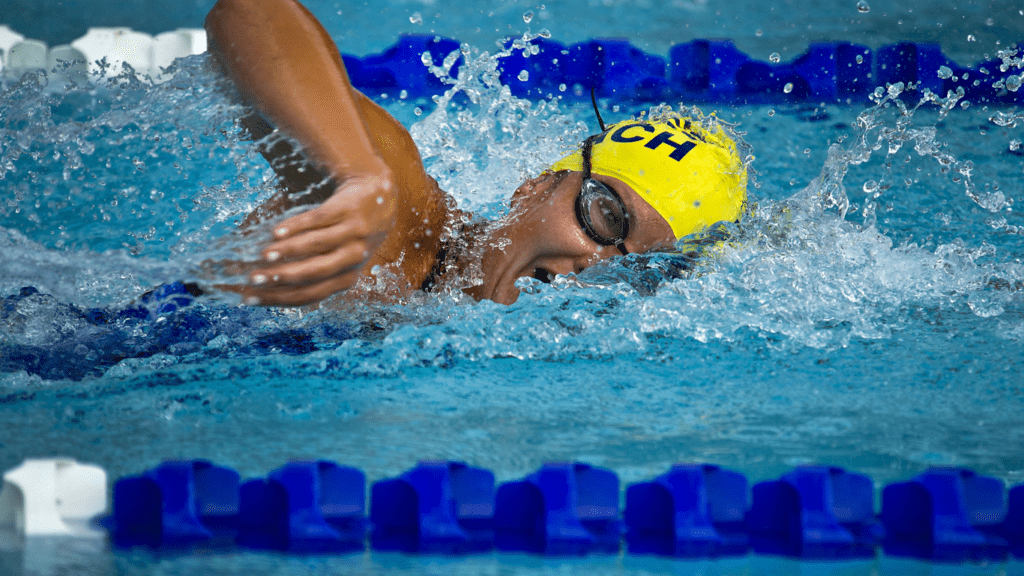Swimming, once considered a traditional sport, is now witnessing a wave of innovation that’s revolutionizing the way athletes approach the water. From cutting-edge training methods to groundbreaking stroke techniques, the world of competitive swimming is evolving at a rapid pace. As a seasoned swimmer and enthusiast, I’ve witnessed firsthand how these innovative approaches are reshaping the sport’s landscape.
In this article, I’ll delve into the latest advancements in swimming techniques that are propelling athletes to new heights of performance. Whether it’s the adoption of unconventional training regimens or the refinement of classic strokes, swimmers today are pushing boundaries like never before. Join me as we explore how these innovative strategies are not only enhancing competitive outcomes but also inspiring a new generation of swimmers to dream bigger and swim faster.
Exploring the Impact of Innovative Swimming Techniques
As a seasoned swimmer, I’ve witnessed firsthand the transformative power of innovative swimming techniques on the sport. Let’s delve into the influence these advancements have had on competitive swimming and the key technological breakthroughs driving this evolution.
Current State of Competitive Swimming
Competitive swimming is currently experiencing a significant shift due to the adoption of innovative techniques and training methods. Athletes are constantly striving to improve their performance, leading to a surge in the exploration and implementation of cutting-edge approaches. This shift has not only elevated the level of competition but has also spurred the development of new training regimens that focus on efficiency, speed, and endurance.
Key Technological Advancements
Technological advancements have played a crucial role in revolutionizing the sport of swimming. From advanced performance tracking systems to state-of-the-art swimwear designed for optimal efficiency, technology has provided swimmers with the tools needed to enhance their abilities and reach peak performance. Additionally, innovations in stroke analysis and biomechanics have enabled athletes to fine-tune their techniques, leading to improved speed and agility in the water. The integration of technology in swimming has set new standards for excellence and is reshaping the way athletes approach training and competition.
Major Techniques Shaping Modern Swimming

I’ve always been fascinated by the major techniques that are transforming the world of swimming. Let’s dive into some of the revolutionary methods that are shaping modern swimming and pushing athletes to new heights.
Ultra-Efficient Stroke Mechanics
When it comes to excelling in the water, ultra-efficient stroke mechanics play a crucial role in propelling swimmers forward. By fine-tuning the movements of each stroke, athletes can minimize drag and maximize propulsion, leading to faster times and improved performance. Coaches and swimmers are constantly analyzing and refining stroke techniques to achieve the perfect balance between power and efficiency.
Enhanced Breathing Strategies
In the realm of competitive swimming, mastering breathing techniques is essential for success. Enhanced breathing strategies not only optimize oxygen intake but also contribute to better body position and overall swim performance. Swimmers are exploring innovative ways to synchronize breathing with stroke mechanics, ensuring a harmonious rhythm that supports their endurance and speed in the water. By incorporating advanced breathing techniques into their training routines, athletes can maintain optimal performance levels throughout their races.
Training Methods and Tools
Innovative training methods and advanced tools have revolutionized the way swimmers enhance their performance and achieve success in competitive swimming. Athletes now have access to cutting-edge techniques and technologies that are reshaping the sport and pushing its boundaries.
Virtual Reality and Real-Time Feedback
Virtual reality (VR) has emerged as a game-changer in swim training, offering swimmers an immersive experience that replicates race conditions and enables them to fine-tune their strokes and turns. Through VR simulations, swimmers can visualize their races, identify areas for improvement, and make real-time adjustments to enhance their performance. This technology provides invaluable feedback that helps athletes optimize their techniques and maximize their efficiency in the water.
Specialized Equipment and Wearables
The use of specialized equipment and wearables has become increasingly prevalent in modern swimming training. From high-tech swimsuits designed to reduce drag and increase speed to wearable devices that track performance metrics in real-time, swimmers now have access to a wide range of tools that enhance their training experience. These innovative devices not only provide swimmers with valuable data on their performance but also help coaches tailor training programs to target specific areas for improvement. By incorporating these tools into their training regimens, athletes can optimize their workouts, improve their skills, and ultimately elevate their performance to new heights.
Case Studies: Athletes and Innovations
Innovative swimming techniques have not only transformed competitive swimming but have also revolutionized the sport, enhancing athletes’ performance and pushing the boundaries of what was once thought possible. Let’s delve into some case studies that highlight the successful application of these cutting-edge methods in competitive events and the remarkable results achieved through training regimen adjustments.
Successful Application in Competitive Events
- Olympian Michael Phelps, renowned for his exceptional swimming prowess, utilized advanced stroke analysis technology to refine his technique. By incorporating data-driven insights into his training, Phelps optimized his strokes’ efficiency, leading to record-breaking performances and multiple gold medals.
- In the world of sprint swimming, athlete Caeleb Dressel embraced ultra-efficient stroke mechanics to gain a competitive edge. His focus on biomechanics and streamlined movements propelled him to victory in numerous high-speed events, showcasing the impact of innovation on performance outcomes.
- Swimmer Katie Ledecky revolutionized long-distance racing by integrating enhanced breathing strategies into her regimen. Through meticulous training incorporating optimal breathing techniques, Ledecky achieved unparalleled success in endurance events, setting new standards for efficiency and speed in distance swimming.
- By implementing real-time feedback mechanisms during training sessions, swimmer Ryan Murphy enhanced his stroke precision and timing. The immediate insights provided by wearable devices enabled Murphy to make rapid adjustments, resulting in improved speed and agility that translated into podium finishes at major competitions.
- Rising star Regan Smith embraced virtual reality simulations to visualize race scenarios and perfect her starts and turns. This innovative approach to training allowed Smith to simulate competition conditions, leading to heightened mental preparedness and a competitive edge that propelled her to victory in backstroke events.
These case studies exemplify how athletes leverage innovative swimming techniques to optimize their performance, redefine the boundaries of the sport, and inspire a new era of swimming excellence.


 is a dedicated fitness enthusiast with a deep-seated passion for swimming and holistic health. Leveraging her extensive background in competitive swimming and personal training, she provides readers with expert advice on optimizing their workouts and enhancing their overall well-being. Kiara's writing stands out for its blend of motivation and practical tips, making complex fitness concepts accessible and actionable. She is committed to helping individuals of all levels reach their fitness goals by promoting a balanced approach to exercise and nutrition. In her articles on Swim Fast Stay Fit, Kiara shares her personal experiences, training techniques, and strategies for overcoming common fitness challenges, inspiring others to lead healthier and more active lives.
is a dedicated fitness enthusiast with a deep-seated passion for swimming and holistic health. Leveraging her extensive background in competitive swimming and personal training, she provides readers with expert advice on optimizing their workouts and enhancing their overall well-being. Kiara's writing stands out for its blend of motivation and practical tips, making complex fitness concepts accessible and actionable. She is committed to helping individuals of all levels reach their fitness goals by promoting a balanced approach to exercise and nutrition. In her articles on Swim Fast Stay Fit, Kiara shares her personal experiences, training techniques, and strategies for overcoming common fitness challenges, inspiring others to lead healthier and more active lives.
